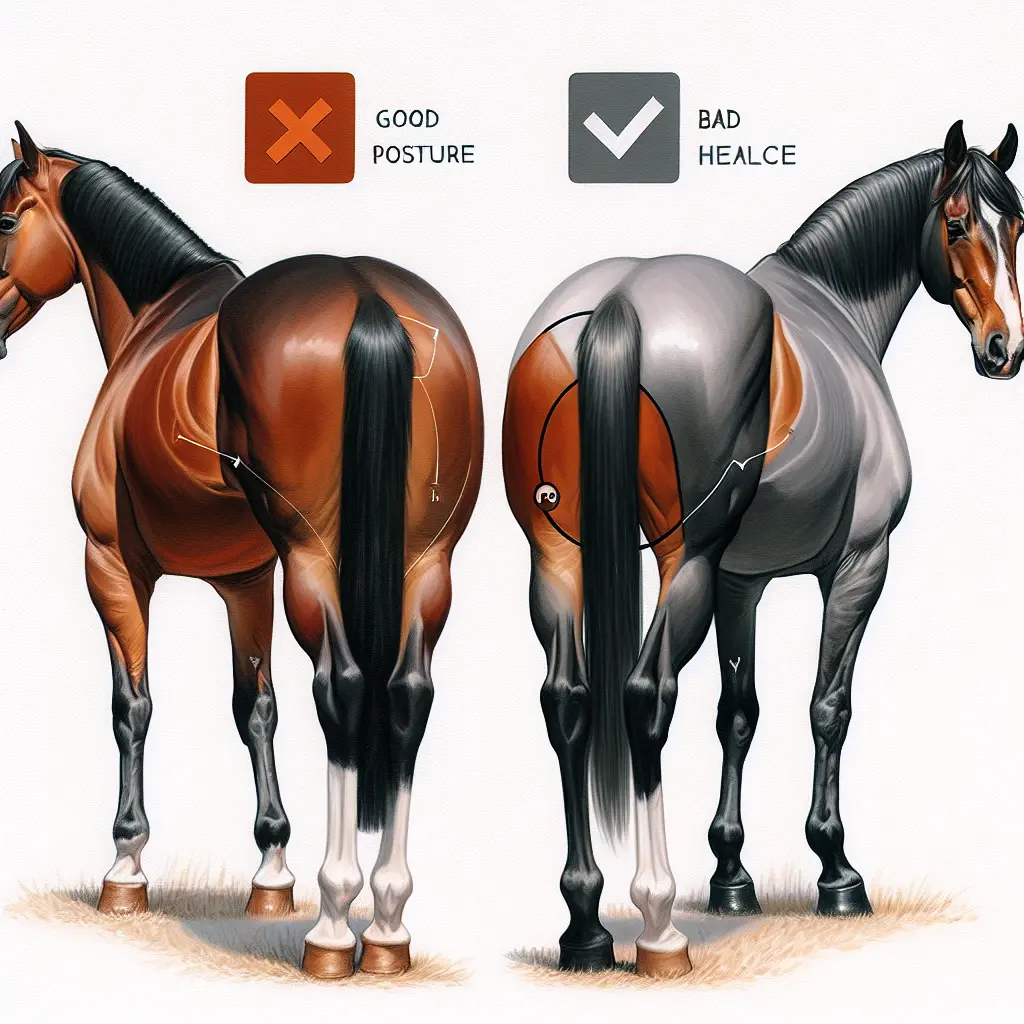Is Your Horse's Stance a Cause for Concern? Understanding Equine Postures and Health Implications
When it comes to the health and well-being of your horse, one often overlooked but crucial aspect is their posture. A horse's stance can reveal a significant amount about their overall health, comfort, and potential underlying issues. In this blog, we will delve into the importance of equine posture, how to assess it, and the health implications associated with different stances.
Why Equine Posture Matters
Equine posture is more than just aesthetics; it is a reflection of the horse's musculoskeletal health and comfort. Horses spend most of their time standing, and their posture during this time can have long-term effects on their body.

According to Dr. Karen Gellman, a veterinarian with a doctorate in animal locomotion biomechanics, "Standing is the horse’s most prevalent activity," and yet, it is often overlooked in favor of assessing their locomotion. [Source]
Identifying Good and Poor Posture
Good Posture
A horse with good posture typically exhibits a balanced and symmetrical stance. Here are some key indicators:
- Legs: The legs should be vertical to the ground, with each limb positioned evenly under the body.
- Abdominal Line: A strong and lifted abdominal line indicates good core strength and posture.
- Back: The back should be straight and not hollow or sagging.
- Neck and Head: The neck should be neither too high nor too low, maintaining a natural alignment. [Source]

Poor Posture
Poor posture in horses can manifest in several ways, each potentially indicating different health issues:
- Canted-In Posture: When a horse stands with its legs canted-in under its body, it can be associated with chronic or recurrent lameness issues, such as navicular syndrome, suspensory strains, hock arthritis, and back pain.
- Weak Slumping Posture: A sagging abdominal line, weak back, and limbs that are either too far under or too far out from the body can indicate poor core strength and potential musculoskeletal problems. [Source]
- Hollow Back: A hollow back or a high head and neck carriage can suggest discomfort or pain in the back or neck area.
- Pelvis Tilt: A pelvis tilted too far forward or backward can affect the horse's balance and put undue stress on the joints. [Source]
Health Implications of Poor Posture
Poor posture in horses is not just a cosmetic issue; it can have serious health implications.
Musculoskeletal Problems
Horses with poor posture are more likely to develop musculoskeletal problems such as:
- Degenerative Joint Disease: Leading to osteoarthritis or lameness.
- Muscle Atrophy: Weakness in the top line muscles.
- Back Pain: Resulting from a hollow back or uneven muscle build-up. [Source]
Dental and Hoof Issues
Research has shown that a canted-in posture is closely associated with dental malocclusion and distorted morphology of hoof capsules. These issues can send distorted proprioceptive signals to the postural control centers of the brain, further exacerbating the poor posture.

Energy Expenditure and Stability
A horse standing in a canted-in posture expends twice the amount of neuromuscular effort compared to one standing square. This increased energy expenditure can lead to fatigue and reduce the horse's overall performance and comfort. [Source]
Assessing Your Horse's Posture
Assessing your horse's posture regularly is a valuable skill that can help you identify potential health issues early.
- Visual Inspection: Step back and observe your horse's stance, both standing still and in movement. Look for the indicators of good and poor posture mentioned above.
- Photographic Comparison: Use photos of your horse in different stances to compare and monitor changes over time.
- Professional Evaluation: If you are unsure or notice any signs of poor posture, consult with a veterinarian or an equine physiotherapist who can provide a detailed assessment and recommendations for improvement.
Improving Your Horse's Posture
Improving your horse's posture involves a combination of proper training, care, and management.
- Correct Training: Ensure that your horse is trained using methods that do not compromise their musculoskeletal health. Avoid training systems that lead to compensatory postures.
- Regular Exercise: Engage your horse in exercises that promote strength, flexibility, and balance. For example, strength and straightness training programs can help improve posture and overall musculoskeletal health. [Source]
- Proper Care: Regularly check and maintain your horse's dental health and hoof condition to prevent issues that can affect their posture.

Conclusion
A horse's stance is more than just a reflection of their immediate comfort; it is a window into their overall health and well-being. By understanding the signs of good and poor posture, regularly assessing your horse's stance, and taking proactive steps to improve it, you can help prevent a range of health issues and ensure your horse remains healthy and comfortable.
For more detailed guidance on assessing and improving your horse's posture, consider consulting resources from equine health experts and joining training programs focused on strength and straightness.


